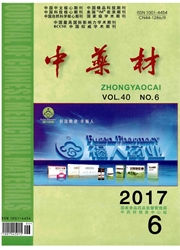

 中文摘要:
中文摘要:
目的:对建泽泻三萜类成分生物合成关键酶HMGR基因保守区片段进行克隆与组织分布研究。方法:以建泽泻总RNA为模板,通过RT-PCR方法,克隆HMGR基因的保守区片段,并用实时荧光定量PCR(QRT-PCR)检测HMGR基因在不同器官中的表达情况。结果:所克隆的建泽泻HMGR基因保守区序列长度为458 bp(Gen-Bank注册号为HQ913638),与药用植物黄花蒿、柴胡、杜仲、丹参的同源性分别达到86.8%、88.2%、88.2%、85.5%,QRT-PCR结果显示HMGR基因在建泽泻各器官中均有表达,其中叶片表达量较高,块茎、根、叶柄表达量相对较低。结论:首次分离并报道了建泽泻HMGR基因保守区片段克隆及其组织分布,为泽泻三萜类成分生物合成途径的阐明和生物工程应用提供科学依据。
 英文摘要:
英文摘要:
Objective: To clone and study the distribution pattern of 3-hydroxy-3-methylglutaryl coenzyme A reductase(HMGR) gene conserved fragment in Alisma orientale.Methods: The HMGR conserved fragment in A.orientale was amplified by RT-PCR strategy with the total RNA of young leaves as the template.HMGR mRNA expression in different organs was detected by real-time quantitative PCR(QRT-PCR).Results: The conserved fragment was 458 bp(accession NO.HQ913638).NCBI Blast sequence analysis showed the resulting protein had high homology to HMGR with 86.8% similarity to Artemisia annua,88.2% to Bupleurum chinense,88.2% to Eucommia ulmoides,and 85.5% to Salvia miltiorrhiza.The result of QRT-PCR showed that the HMGR gene was expressed in different organs(i.e.leaves,petioles,tubers,and roots) which was higher in leaves relative to other tissues.Conclusion: The HMGR gene conserved fragment from A.orientale was cloned and its distribution pattern was detected for the first time.This work provides a foundation for exploring the synthetic pathway and bioengineering of Alisma terpenes.
 同期刊论文项目
同期刊论文项目
 同项目期刊论文
同项目期刊论文
 期刊信息
期刊信息
